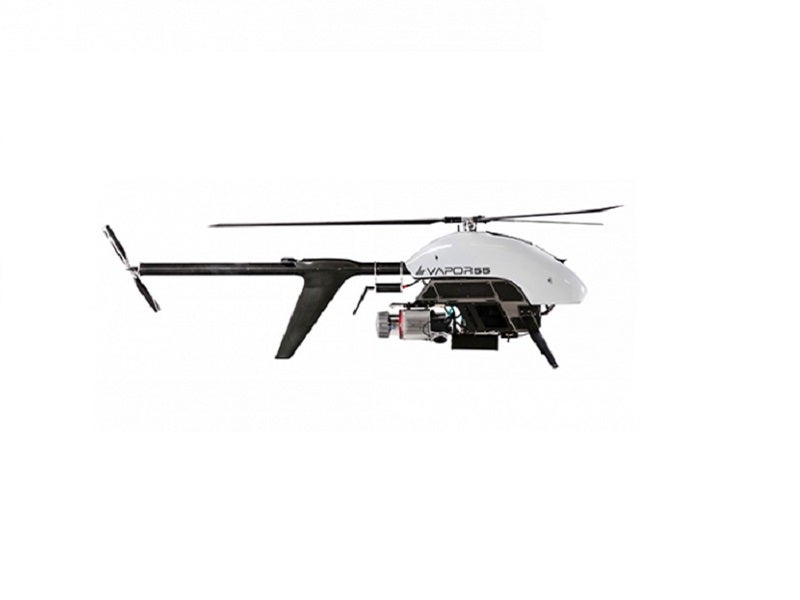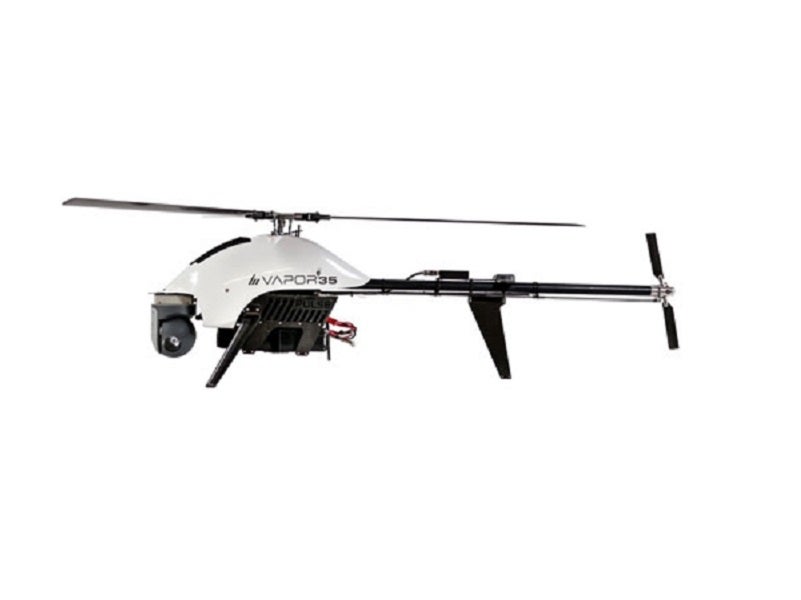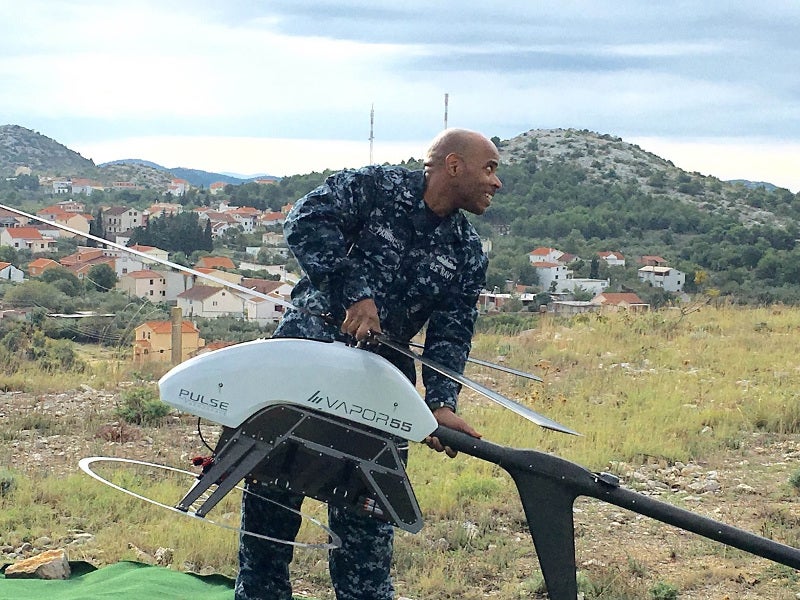Vapor is an all-electric small unmanned aircraft system (UAS) offered by AeroVironment. It was unveiled at the Defence and Security Equipment International (DSEI) convention 2019 held in London in September 2019.
The Vapor rotorcraft UAS was developed by Pulse Aerospace, which was acquired by AeroVironment in June 2019.
The Vapor rotary-wing unmanned aerial vehicle is available in two variants namely Vapor 55 and Vapor 35. The battery-powered platforms complement and expand AeroVironment’s portfolio of unmanned aircraft including Puma, Raven, and Wasp.
Vapor all-electric helicopters are meant for defence, commercial, and industrial missions.
Vapor all-electric helicopter UAS design and features
Vapor UAS is designed to deliver mission-critical performance without the need for human intervention. It features an advanced and aerodynamic blade design with increased wind gust rejection capability. The three-bladed rotor with low revolutions per minute (RPM) further improves payload performance and stability.
The UAS is equipped with an advanced flight control system (FCS) and industry-leading autopilot system. It comes with a pre-installed survey-grade global positioning system/global navigation satellite system (GPS/GLONASS) receiver with an optional real-time kinetic (RTK) system.
Both Vapour 35 and Vapour 55 feature vertical take-off and landing (VTOL) capability. The wide stance landing gear arrangement assures stable landings even on bumpy and irregular terrain. It includes high sensory systems with camera-driven triggering.
The Vapor is fitted with a 900MHz control link along with an optional 2.4GHz bandwidth payload link.
The base package of the UAS includes a spare parts kit integrating landing gear, blade set, additional fasteners, high-wear structural components, and toolset.
Vapor all-electric helicopter UAS payloads
Vapor 55 and Vapor 35 have a payload capacity of 4.5kg and 2.27kg, respectively. Both variants carry electro-optical and infrared (EO/IR) imaging sensors and hyper-spectral imaging sensors, which help to gather images and video for surveillance.
The UAS also features post-processing kinematic (PPK) mapping system and is installed with a light detection and ranging (LiDAR) device, which utilises a pulsed laser to determine the distances of objects from the Earth.
In addition, the Vapor 55 all-electric helicopter can integrate a drop/delivery mechanism and multi-payload capability.
Ground control station
The fully-autonomous, easy-to-operate Vapor UAS is purpose-built for mission-critical performance. Equipped with dynamic re-tasking capability, the vehicle requires minimum or no human intervention to complete missions.
The UAS is operated and guided with the help of a touchscreen-compatible ground control system. The information and imagery captured by the aircraft can be accessed by a handheld remote video terminal, which allows dismounted ground troops to receive real-time video downlink images and geo-data.
Propulsion and performance
The Vapour UAS is equipped with an all-electric propulsion system powered by a long-endurance, high-density lithium-polymer battery. It comes with a spare battery unit and a battery charging station including power supply system.
The unmanned rotorcraft can fly at a speed of 37km/h against peak wind speeds, while the maximum flying speed is 72km/h and maximum ground speed is 53km/h (33mi/h).
It can operate at an altitude of 12,000ft above mean sea level (MSL) and can travel up to 56km (35mi) from its launch site. It offers a maximum endurance of 60 minutes when carrying maximum payload, while the maximum hover endurance is 45 minutes.




